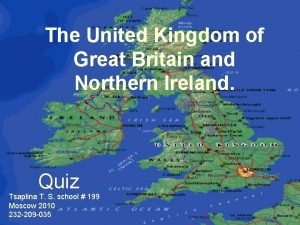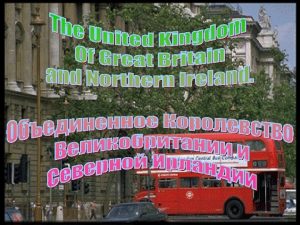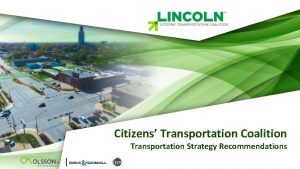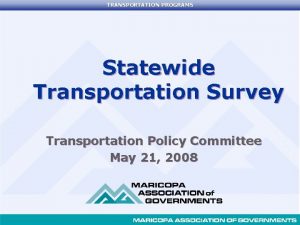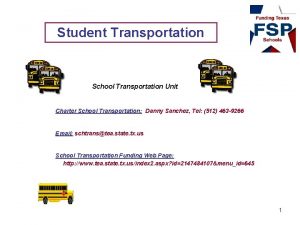The Transportation System It consist of two main





- Slides: 5

The Transportation System It consist of two main components: demand supply. • Travel demand derives from the need to access urban functions and services in different places and is determined by the distribution of households and activities in the area. Household members make longterm “mobility choices” (holding a driving license, owning a car, etc. ) and short-term “travel choices” (trip frequency, time, destination, mode, path, 1 etc. ), and use the transportation network and services so that they can undertake different activities (work, study, shopping, etc. ) in different locations.

The transportation supply component is made up of the facilities (roads, parking spaces, railway lines, etc. ), services (transit lines and timetables), regulations (road circulation and parking regulations), and prices (transit fares, parking prices, road tolls, etc. ) that produce travel opportunities. Travel from one location to another frequently involves the successive use of several connected facilities or services. Transportation facilities generally have a finite capacity, that is, a maximum number of units that may use them in a given time interval. Transportation facilities also generally exhibit congestion; that is, the number of their users in a time unit affects their performance.

• The performance of the transportation system influences the relative accessibility of different zones of the urban area by determining, for each zone, the generalized cost (disutility) of reaching other zones (active accessibility), or of being reached from other zones (passive accessibility). As has been noted, both these types of accessibilities influence the location of households and economic activities and ultimately the real estate market

• Travel demand: is expressed as the number of persons or vehicles per unit time that can be expected to travel on a given segment of a transportation system under a set of given land-use, socioeconomic, and environmental conditions. • Forecasts of travel demand: are used to establish the vehicular volume on future or modified transportation system alternatives.

Factors Influencing Travel Demand: three factors that influence the demand for urban travel are: • (1) The location and intensity of land use; • Is a primary determinant of travel demand. The amount of traffic generated by a parcel of land depends on how the land is used. For example, shopping centers, residential complexes, and office buildings produce different traffic generation patterns. • (2) The socioeconomic characteristics of people living in the area; • Socioeconomic characteristics of the people living within the city also influence the demand for transportation. Lifestyles and values affect how people decide to use their resources for transportation. For example, a residential area consisting primarily of high-income workers will generate more trips by automobile person than a residential area populated primarily by retirees. • (3) The extent, cost, and quality of available transportation services. • The availability of transportation facilities and services, referred to as the supply, also affects the demand for travel. Travelers are sensitive to the level of service


